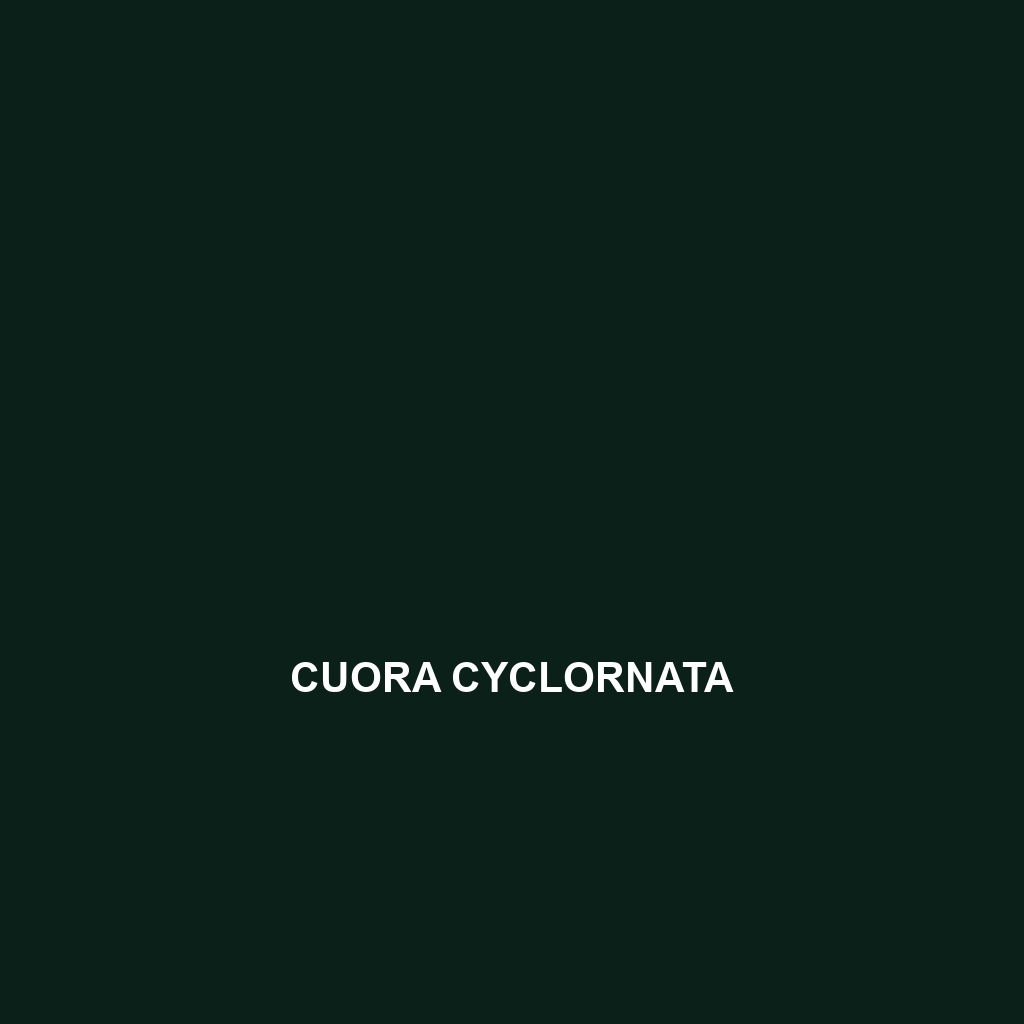Cuora cyclornata
Common Name: Cuora cyclornata
Scientific Name: Cuora cyclornata
Habitat:
Cuora cyclornata, commonly known as the Indochinese box turtle, primarily inhabits the moist forests of Southeast Asia, particularly in regions such as Vietnam, Laos, and southern China. This species prefers freshwater habitats, including rivers, ponds, and marshes, where it can find adequate shelter and food sources amidst dense vegetation.
Physical Characteristics:
This medium-sized turtle typically measures between 20 to 25 cm in shell length. Cuora cyclornata is notable for its distinctive high-domed carapace, which features a unique pattern of yellow and brown markings. The overall coloration ranges from dark brown to olive green, with a lighter underside. One of its defining features is the prominent yellowish stripe running down the center of its shell, which aids in its camouflage among the forest floor.
Behavior:
Cuora cyclornata displays primarily diurnal activity, meaning it is most active during the day. It is known for its shy and reclusive nature, often retreating into its shell when threatened. This species exhibits a slow, deliberate movement and is an adept climber, often found in trees or dense foliage. During the rainy season, cuora cyclornata becomes more active, foraging for food and engaging in social behaviors with other turtles.
Diet:
The Indochinese box turtle is omnivorous, with a diet comprising a mix of plant matter and animal protein. Common food sources include fruits, vegetables, insects, and small invertebrates. Cuora cyclornata plays a significant role in seed dispersal within its habitat, contributing to the ecological balance of its environment.
Reproduction:
Cuora cyclornata typically breeds during the rainy season, which can vary by geographic location. Females lay between 2 to 6 eggs in shallow nests dug into soft soil. The incubation period lasts approximately 50 to 80 days, after which the hatchlings emerge. Notably, the sex of the offspring can be influenced by the temperature during incubation, a phenomenon known as temperature-dependent sex determination.
Conservation Status:
Due to habitat loss, poaching, and the pet trade, Cuora cyclornata is classified as endangered by the International Union for Conservation of Nature (IUCN). Conservation efforts are currently underway to protect this species and its natural habitat from further degradation.
Interesting Facts:
One unique aspect of Cuora cyclornata is its ability to completely retract its head and limbs into its shell, offering a high level of protection from predators. Furthermore, this turtle has a long lifespan, often living 40 years or more in the wild, which adds to its appeal among conservationists and enthusiasts alike.
Role in Ecosystem:
Cuora cyclornata plays a crucial role in its ecosystem by helping to maintain the health of its habitats. As an omnivore, it contributes to the control of insect populations and aids in plant reproduction through seed dispersal. The presence of this turtle indicates a balanced ecosystem, making it an important species for ecological studies and conservation efforts.
